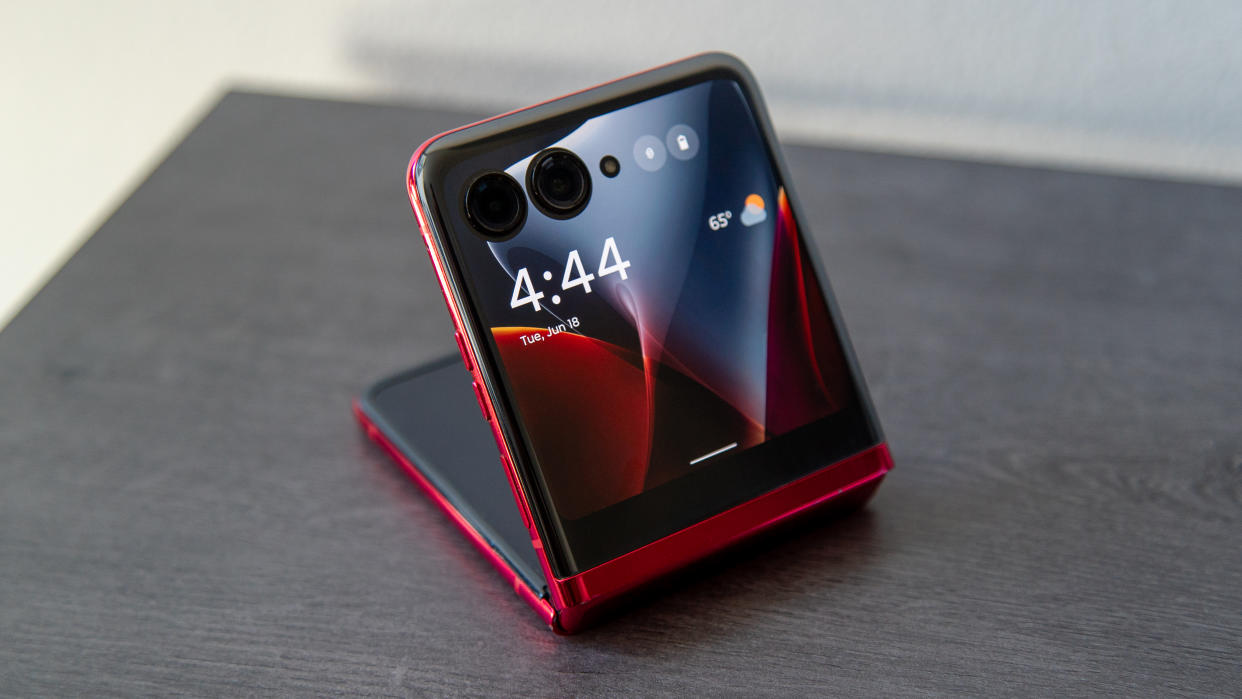Android 14 is finally coming to the Motorola Razr and Razr Plus, and it only took a year

What you need to know
Motorola quietly added a new support document for “What’s new in Android 14,” signaling the update’s imminent release.
Razr Plus 2024 and Razr 2024 users have started to see Android 14 appear on their devices, though not all device owners have received the update.
Android 14 comes to Motorola’s foldables from 2023 about a year after they were first introduced, and just days after the new Razr phones were revealed.
Motorola recently unveiled its next-generation foldables, which are set to launch this month: the Razr Plus 2024 and Razr 2024. Those devices will launch with Android 14, but when Motorola showed them off, the current-gen Razr Plus 2023 and Razr 2023 were still stuck on Android 13. The company is finally changing that, as the Android 14 update is rolling out for some Razr owners about a year after their phones were first released.
Several users have seen the Android 14 update appear on their Razr Plus or Razr phones over the last few days, but it isn’t hitting all devices right now (via 9to5Google). YTechB also noticed that Motorola quietly published a support document explaining what’s new in Android 14 for the Razr 40 Ultra. That’s what the Razr Plus is called outside of North America.
“Better late than never” is one way to look at Motorola’s slow pace of supporting Android 14 on the Razr Plus and Razr. Another viewpoint might be that the lack of urgency in updating Motorola’s flagship foldable is just another reason why the company’s software support shouldn’t be trusted. Android Central editor Derrek Lee has been using the Razr Plus 2023 as a daily driver for the better part of the last year, and it has been a bit of a mixed bag. Software support, particularly for Android 14 but also for the Gemini app, is a key negative to using the Razr Plus 2023.
Now that the Android 14 update is rolling out to the 2023 lineup of Motorola foldables, it feels like a wrong has been righted. But at the same time, I’m not sure this excuses Motorola’s poor rollout pace for the upgrade. For reference, the Moto G Stylus 5G 2023 got the Android 14 update before the Razr Plus 2023, and the former phone is a budget device that retailed for $400. What’s the point of paying for premium Motorola phones if those customers aren’t prioritized?
Motorola promises that the Razr Plus 2023 will get three years of full OS upgrades and four years of bi-monthly security patches. The company ticks off the first OS upgrade of that promise with Android 14, and it can still uphold its end of the bargain. However, I’m not sure if this is what Razr owners pictured when they purchased their smartphone.
Razr phones are already in a weird spot since they were introduced in the summer months, and most of us are already looking ahead to the next Android update. The Razr Plus 2023 and Razr 2023 launched with Android 13, and Android 14 came just a few months later. This same scenario will play out for the Razr Plus 2024 and Razr 2024, which will launch with Android 14 a few months before Android 15 debuts.
The predicament wouldn’t be as much of a problem if Motorola rolled out Android updates quickly. In fact, despite Samsung launching its foldables after Motorola, this release schedule hasn’t been a problem. It’s only an issue because Motorola takes an insanely long time to roll out Android updates. If I were a prospective Razr Plus 2024 buyer, and I thought Motorola might not give that phone Android 15 until July 2025, it would certainly factor into my purchasing decision.





At face value, it’s easy to rag on Motorola for not providing efficient, reliable, and extensive software support for its premium smartphones. But it’s never that simple. In its effort to bring Android 14 to its 2023 lineup of folding phones, Motorola made a lot of good choices. For starters, it decided to bring some of the new software features debuting on the Razr Plus 2024 to the current Razr Plus 2023. These features will actually be available on the current models starting now, and that’s before the new models become available for purchase.
The list of new features includes improved cover screen software, new panels, and better fonts. Motorola also added an always-on display and the ability to use the camera’s flash to signify unread notifications. That’s without mentioning all of the base Android 14 features that Google added to the Android Open Source Project version that Motorola’s MyUX is based on.
It’s not a given that companies will bring new software features designed for newer phones to older ones. In fact, Motorola might be better off making features exclusive to the 2024 models to make them a better value or a more appealing upgrade. Of course, the fact that they didn’t do that should be praised. There’s no technical reason why these improvements can’t run on the Razr Plus 2023, and it’s a good thing they’re being ported to that model with Android 14.
This only makes the software situation more complicated. On one hand, Motorola’s slow rollout of Android 14 should be an immediate red flag for people considering buying one of its newer phones. On the other hand, adding Razr Plus 2024 features to Razr Plus 2023 with an update is a consumer-friendly move for which Motorola deserves credit. At the end of the day, buyers need to decide whether Motorola’s updates are worth the wait because speed and longevity aren’t the company’s strengths.
